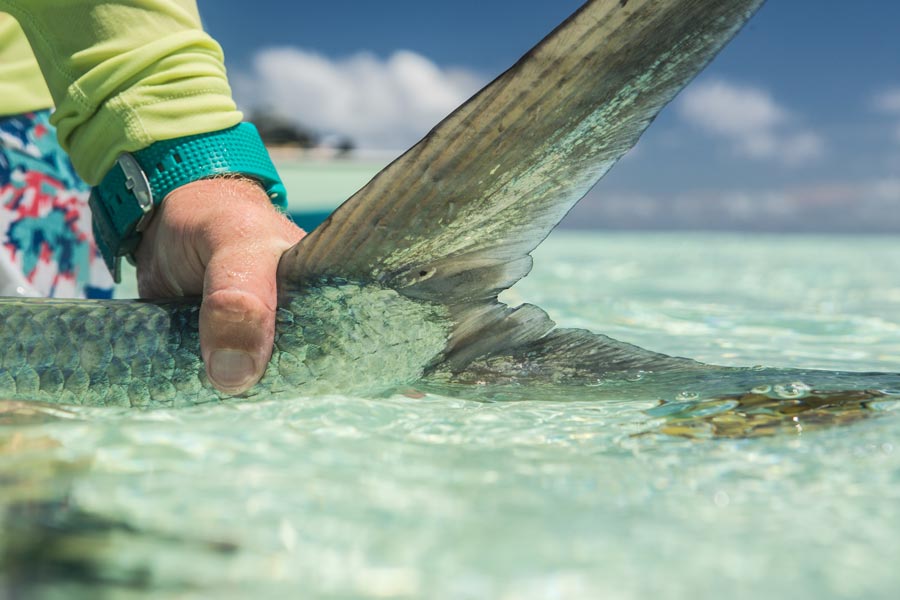Catching milkfish on the fly (from Flyfishbonehead)
“Milkfish are silver colored with large forked black tails and streamlined appearance, the look like silver torpedoes with a sizable forked caudal fin. They can grow to almost 6 feet (~1.8 meters) but are most often about 1-3 feet (1 meter) in length. They have no teeth and generally feed on invertebrates, algae and small fish in a very similar feeding habit as permit in open water and bonefish in the flats. They occur in the Indian Ocean and across the Pacific Ocean. Milkfish usually tend to school around islands and along coasts with reefs. Young milk live at sea for several weeks and then migrate to the safety of mangrove swamps, estuaries and even brackish lakes. They forage in the safety of the mangroves until they are large enough to escape prey (18-24 inches in length) and hunt. They return to sea to mature sexually and reproduce within about 24 months.

Their lifespan is believed to be about 13-16 years. Distribution Indo-Pacific: along continental shelves and around islands, where temperatures are greater than 68° F (~20°C). Commonly seen in South Africa, Northern & Western Australia in throughout the Indo-Pacific. They span as far as Hawaii and the Marquesas but their numbers are not as plentiful, and even less to the north as far as Japan. They are reported as far south as Victoria, Australia however, Brisbane area in Queensland is probably the southernmost point where fishing for them is not fruitless. Eastern Pacific: San Pedro, California all the way to the Galapagos Islands west of Ecuador.
Fly Fishing Tips for Milkfish

8-9 weight rods are used when fishing the shallows and flats for smaller milkfish. Similar techniques that are used for bonefish are used for milkfish. Long leaders are necessary, casting in front of your target and leading the fish is optimal for bones, but you must let your fly drift toward the milkfish. Smaller flies like #8 gotchas and small shrimp imitations are sometimes used but mostly flies that have the appearance of algae work best. Fly fishing for juvenile milkfish is very similar to fly fishing for bonefish on the flats in the shallows. Bring your 10 -12 weight for surface feeding ocean milkfish. What they tend to do is drift at or just below the surface awaiting algae chunks, small crustaceans and other morsels to come along. Technique wise, hunting for milkfish is most similar to hunting for permit. You are looking for shapes and shadows below the surface and cast your fly just in front of the target. It differs because you are not leading it with short, twitchy retrieves. It is enticed by thinking that the crustacean or algae is drifting toward it. Stripping or moving the fly will generally spook milkfish. If you see the take, like billfish, wait for the turn and set the hook. Once hooked, just hold on and hope it isn’t a 6 footer. Selecting a fly for a milkfish is very destination specific and not quite uniform yet. You do have to essentially match the hatch for milkfish, but they generally will eat if the presentation is sufficient. Best to have an array of green algae flies in different shades of green and material so you can best match what’s floating around.
They will take off line at a truly alarming rate. When lining for milkfish, it is wise to use 400-500 yards of gel spun backing. While you will probably never successfully retrieve a fish if you have that much line and backing out, (just saying, its a rare event) at least you’ll have a chance to feel the raw force of these special fish.
Photos courtesy of www.alphonsefishingco.com


